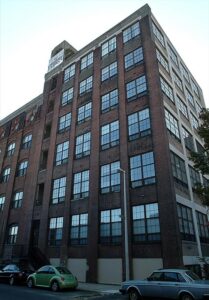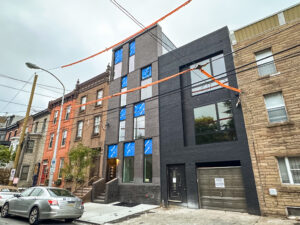
No doubt demographics in the Philadelphia region have shifted in the twenty-first century as the city proper, in line with other major urban area across the country, have made something of an economic comeback. New investment has spurred rising demand for housing in Center City, while rising costs have burdened nearby areas traditionally marginalized economically. With progress, then, has come greater poverty, maintaining Philadelphia’s position as the poorest big city in the nation.
Two years after Dylan Gotlieb published his essay on gentrification in Philadelphia in the Encyclopedia in 2014, the Pew Foundation confirmed his finding that the controversial and often disruptive process was largely confined to areas close to if not entirely within Center City. Identifying only 15 of the city’s 372 census tracts where gentrification was significant, the study noted that the overall number of residents living in poverty, by contrast, had grown by 69,000 people since 2000.
Three years later the Federal Reserve of Philadelphia released another study minimizing the reach of gentrification and its effects, commenting that such change “creates some important benefits for original resident adults and children and few observable harms.”
Gentrification became enough of a problem, however, to prompt critical reviews from Philadelphia Inquirer columnist Inga Saffron and urban critic Richard Florida, who, as a fellow at Drexel University in 2019, proclaimed that Philadelphia was caught in a “new urban crisis,” characterized by rising income inequality, economic segregation, and housing unaffordability, conditions closely associated with gentrification.
If think tanks in the mid-teens considered gentrification a relatively limited experience concentrated at the city core, it was easy to see in the 2020s how the phenomenon was spreading. Once deeply divested communities, Point Breeze and Grey’s Ferry witnessed rapid gentrification, due to their proximity to the heated real estate activity of Graduate Hospital and, Saffron argued, changes in the zoning code. While Fishtown at the river’s edge witnessed higher home values in the early part of the century, nearby East Kensington also gentrified in subsequent years as development spilled over. New construction, and the social change that came with it near Temple University, extended west to Strawberry Mansion, once one of the poorest areas of the city
Heralded physical changes to the downtown only accelerated the process. Spurred by completion of the long-awaited Schuylkill River Park, for instance, heighted gentrification in adjacent Graduate Hospital, prompted the environmentally advantageous alteration to be described pejoratively as “greenwashing.”
Steven McGovern devotes a good part of a chapter in his new book, Mobilization Politics, to gentrification, stressing the ways activists have sought relief through such new initiatives as inclusionary housing measures and a 1% tax on construction devoted to subsidizing housing in areas of high demand. Such efforts have had limited effect, however, as new construction continues to concentrate in areas of gentrification. In the past year, 44% of the new homes constructed in Philadelphia were located in the eight zip codes of greater Center City, most just north and south of the downtown core.

As a council member, Mayor Cherelle Parker stressed the need to maintain what she called “middle neighborhoods,” areas witnessing neither strong real estate appreciation nor disinvestment and decline, but something in the middle: areas like West Oak Lane, Lawndale, and Logan in her old district. The ambitious housing plan she just announced could well aid these areas by spurring new construction on vacant land and rehabilitation of older properties. It’s harder to see how the plan would relieve pressures in gentrifying areas, especially when federal subsidies seem increasingly out of the question.
Philadelphia has clearly entered a crossroads. Affordable housing, in and out of gentrifying areas, remains a huge challenge, one the city will struggle to resolve as its ambitious plans come up against the combined challenges of an overheated market at the city core, stagnation at the periphery, and almost certain cuts in federal funding.